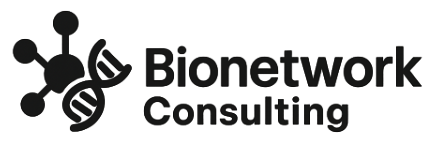
Regulatory compliance is not just a requirement—it is a foundation for patient safety, product integrity, and organizational success in the pharmaceutical, biotech, and medical device industries. Every year, companies undergo FDA inspections, which examine processes, data integrity, and adherence to Good Practices (GxP). Simultaneously, life sciences organizations must ensure that employees are proficient in GxP standards and that digital systems are validated through comprehensive Computer System Validation (CSV) programs.
The increasing complexity of clinical trials, digital health systems, and global supply chains has raised the stakes. Traditional approaches are no longer sufficient. Leveraging cutting-edge technologies, adopting risk-based strategies, and embedding compliance into daily operations are essential for maintaining readiness, avoiding costly inspection findings, and accelerating innovation.
FDA Inspection Readiness: Preparing for Regulatory Scrutiny
An FDA inspection is a critical milestone that assesses an organization’s adherence to regulatory requirements. Inspection readiness goes beyond simply keeping documents organized—it involves creating a culture of continuous compliance and operational excellence.
Key Trends in FDA Inspection Readiness
- Digital Inspection Tools:
Cloud-based document management systems allow real-time access to SOPs, audit trails, and quality records. Inspectors can review information efficiently, reducing delays and demonstrating transparency. - Data Integrity Monitoring:
Advanced analytics platforms monitor electronic records for discrepancies, unauthorized access, and data anomalies. Automated alerts and dashboards allow teams to proactively address issues before inspections. - Risk-Based Approaches:
Risk-based assessment frameworks prioritize high-risk processes and critical systems for review. This approach ensures resources are allocated effectively while strengthening compliance where it matters most. - Remote Readiness Assessments:
Virtual mock inspections and remote audit simulations are increasingly common. These exercises prepare teams for real inspections, ensuring they can respond confidently to questions and evidence requests.
GxP Training: Building a Culture of Compliance
GxP training ensures that employees understand Good Practices, including Good Manufacturing Practices (GMP), Good Clinical Practices (GCP), and Good Laboratory Practices (GLP). Effective training is not a one-time requirement—it must be continuous, engaging, and tailored to the evolving regulatory landscape.
Innovations in GxP Training
- E-Learning Platforms:
Modern Learning Management Systems (LMS) offer interactive, modular courses that employees can complete at their own pace. Features like gamification, quizzes, and scenario-based learning increase engagement and knowledge retention. - Virtual Reality (VR) and Augmented Reality (AR):
Immersive technologies allow employees to practice processes in simulated environments. For example, VR can guide staff through aseptic techniques or laboratory procedures without risk to patients or products. - Personalized Learning Paths:
AI-driven training platforms analyze individual performance and tailor courses to address knowledge gaps. This ensures that each employee is proficient in the GxP standards relevant to their role. - Compliance Analytics:
Advanced reporting tools track training completion, performance trends, and potential compliance risks. Managers can identify areas requiring reinforcement before deficiencies appear during audits or inspections.
Computer System Validation: Ensuring Digital Integrity
With the increasing reliance on digital tools, Computer System Validation (CSV) has become indispensable. CSV ensures that software and electronic systems consistently produce accurate, reliable, and compliant data, supporting regulatory submissions and operational integrity.
Emerging Trends in CSV
- Cloud-Based Validation Tools:
Platforms hosted in the cloud allow collaborative, real-time validation planning, testing, and documentation. This approach accelerates CSV cycles while maintaining audit-ready records. - Automated Testing and Validation:
Automation reduces manual testing errors and ensures repeatable results. AI-assisted validation tools can identify discrepancies, flag potential compliance issues, and streamline documentation. - Lifecycle Management:
Modern CSV emphasizes the complete system lifecycle—from design and development to operation and decommissioning. Continuous monitoring and validation updates ensure that systems remain compliant throughout their use. - Integration with Risk Management:
Risk-based validation prioritizes critical systems and functions, aligning validation efforts with potential patient or regulatory impact. This approach ensures resources are used efficiently while maintaining regulatory rigor.
The Synergy Between FDA Inspection Readiness, GxP Training, and CSV
These three pillars—FDA inspection readiness, GxP training, and Computer System Validation—are interconnected. Strong GxP training ensures that staff understand processes and regulatory expectations. Robust CSV ensures that digital systems produce reliable and auditable data. And together, they create an organization fully prepared for FDA inspections.
Modern life sciences organizations are increasingly adopting integrated platforms that combine training, compliance management, and CSV documentation. This holistic approach reduces redundancies, enhances transparency, and improves overall operational efficiency.
Leveraging Technology for Compliance Excellence
Technology is the catalyst for transforming compliance practices from reactive to proactive. Key innovations shaping the field include:
- AI and Predictive Analytics: Predict inspection outcomes, identify training gaps, and detect system anomalies.
- Blockchain: Ensures immutable audit trails for electronic records, enhancing trust with regulators.
- Remote Monitoring Tools: Support continuous oversight of validated systems and clinical operations without geographical constraints.
- Mobile Learning Platforms: Deliver GxP training directly to employees’ devices, supporting flexible, on-demand learning.
Organizations embracing these technologies not only enhance compliance but also gain a competitive advantage, accelerating product development and improving patient outcomes.
Best Practices for Maintaining Regulatory Excellence
- Conduct regular mock FDA inspections to identify weaknesses before they become findings.
- Implement continuous, role-specific GxP training programs with measurable outcomes.
- Adopt a risk-based CSV approach, focusing validation resources on critical systems.
- Utilize digital platforms for real-time monitoring, documentation, and reporting.
- Foster a culture of quality and accountability at every organizational level.
By following these best practices, life sciences companies can confidently navigate regulatory requirements, maintain inspection readiness, and accelerate innovation without compromising quality.
Conclusion
Achieving excellence in regulatory compliance requires a combination of strategy, technology, and culture. Through proactive FDA inspection readiness, continuous GxP training, and robust Computer System Validation, organizations can ensure data integrity, operational efficiency, and regulatory success. The latest digital tools—from AI-driven analytics to immersive learning and cloud-based CSV platforms—empower companies to maintain compliance while accelerating product development.
For pharmaceutical, biotech, and medical device organizations, mastering these areas is no longer optional—it is essential for staying competitive, protecting patients, and driving life-changing innovations to market.
